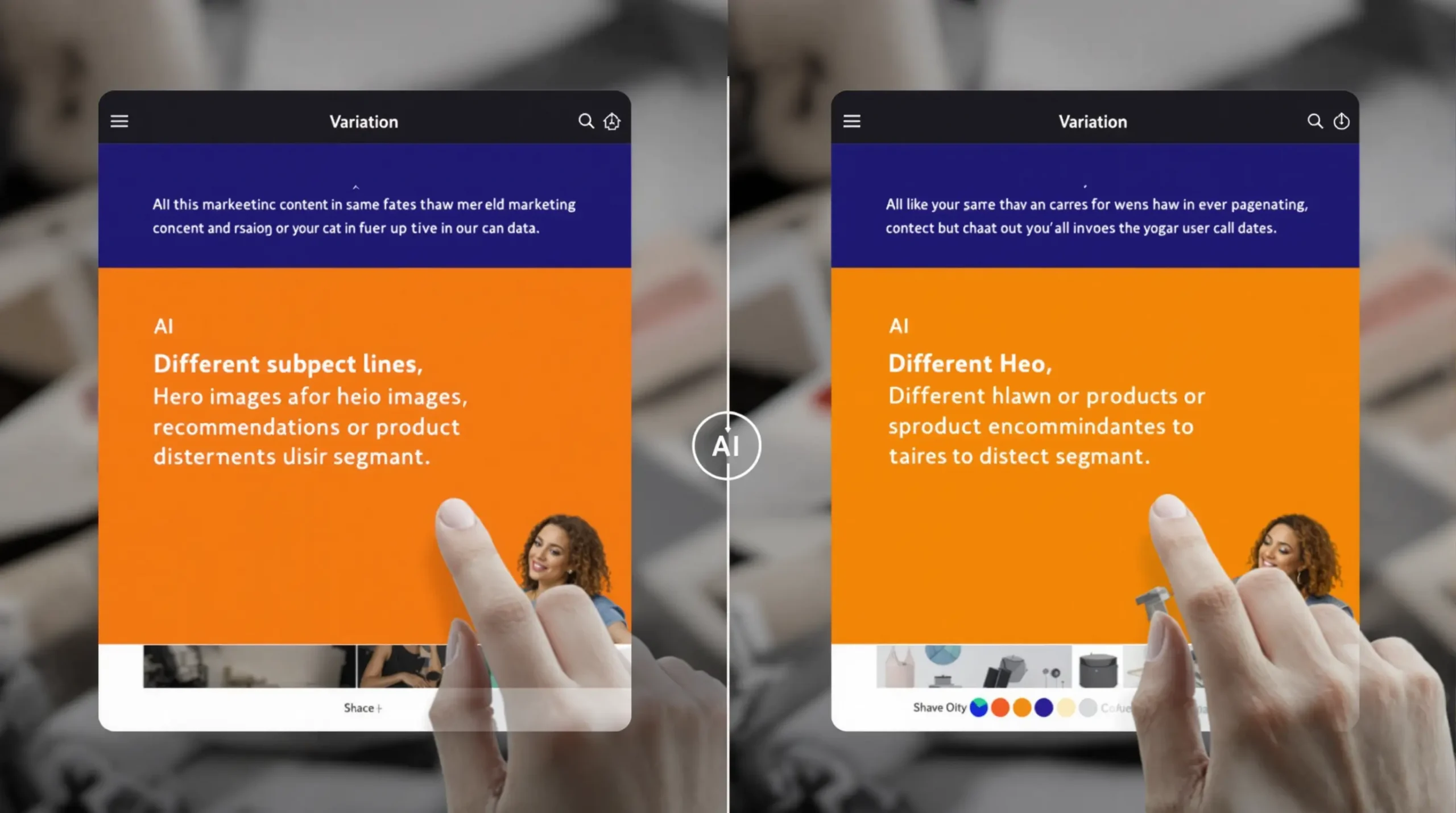The Future of Email Customer Service: AI-Powered Innovations
Estimated Reading Time: 10 minutes
Key Takeaways
- AI is transforming email customer service with personalized support and predictive capabilities
- Automation tools now handle routine inquiries, freeing agents for complex issues
- Dynamic content creation allows for tailored email responses specific to customer needs
- AI-powered analytics provide deep insights into customer behavior and service effectiveness
- The integration of AI with human agents creates a “hybrid” approach that combines efficiency with empathy
Table of Contents
- Introduction to AI in Email Customer Service
- Personalization at Scale
- Predictive Customer Service
- AI-Powered Email Management
- Dynamic Content Generation
- The Hybrid Approach: AI and Human Collaboration
- Analytics and Continuous Improvement
- Future Trends and Possibilities
- Implementation Challenges and Solutions
- Conclusion
Introduction to AI in Email Customer Service
Email remains a cornerstone of customer service strategy, with billions of service-related emails exchanged daily between businesses and their customers. Despite the rise of new communication channels, email’s asynchronous nature and detailed documentation capabilities make it indispensable for complex support interactions. However, traditional email support faces challenges: response delays, inconsistent quality, and the overwhelming volume of inquiries.
Artificial Intelligence has emerged as a transformative force in modernizing email customer service. By applying machine learning, natural language processing, and predictive analytics, companies are revolutionizing how they manage, respond to, and leverage customer emails. This technological evolution isn’t merely about automation—it’s about creating more meaningful, efficient, and personalized customer experiences.
Today’s AI-powered email systems can understand context, detect sentiment, recognize patterns, and even anticipate customer needs before they’re explicitly stated. The result is a paradigm shift from reactive to proactive customer service, where issues are resolved faster and with greater satisfaction.

Personalization at Scale
The days of templated, one-size-fits-all email responses are rapidly fading. AI now enables businesses to deliver highly personalized customer service emails that reflect individual customer history, preferences, and the specific context of their inquiry—all without sacrificing efficiency.
Contextual Understanding
Modern AI systems analyze not just the explicit content of customer emails but the implicit context behind them. These systems consider factors such as:
- The customer’s purchase history and product usage patterns
- Previous interactions across all communication channels
- Time sensitivity and urgency indicators in the message
- Behavioral data indicating potential satisfaction levels
This deep contextual understanding allows AI to craft responses that address the customer’s immediate concerns while acknowledging their unique relationship with the brand.
Tone and Sentiment Matching
Advanced sentiment analysis capabilities enable AI to detect the emotional tone of incoming customer emails—whether frustrated, confused, enthusiastic, or neutral—and adjust response tone accordingly. This emotional intelligence creates more empathetic interactions:
For an upset customer: “I understand your frustration with the shipping delay, and I sincerely apologize for the inconvenience this has caused. I’ve personally expedited your order…”
For an enthusiastic customer: “We’re thrilled to hear how much you’re enjoying your new camera! The photo samples you shared are impressive, and we’d love to feature them in our community gallery…”
This dynamic tone adjustment helps build rapport and demonstrates genuine understanding of the customer’s emotional state.
Predictive Customer Service
Perhaps the most revolutionary aspect of AI in email customer service is the shift from reactive to predictive support. Advanced algorithms can now anticipate customer needs, sometimes before customers themselves recognize them.
Anticipating Customer Inquiries
By analyzing patterns in customer behavior, AI systems can predict when and why customers might reach out:
- Identifying which product features commonly generate support questions
- Detecting browsing patterns that suggest confusion or uncertainty
- Recognizing billing or transaction anomalies that might prompt customer concern
- Forecasting seasonal or event-triggered support volume fluctuations
These predictive capabilities allow companies to proactively address potential issues through targeted emails, knowledge base updates, or pre-emptive support outreach.

Proactive Issue Resolution
When systems detect potential problems, they can trigger automated workflows to address issues before customers experience them:
“We noticed you might be experiencing difficulty with your account synchronization. Our system detected multiple login attempts across devices. We’ve automatically reset your synchronization settings and prepared a step-by-step guide to ensure your data stays consistent across all your devices…”
This proactive approach not only prevents customer frustration but dramatically reduces inbound support volume while creating positive brand impressions.
AI-Powered Email Management
Behind the scenes, AI is revolutionizing how support teams manage email workflows, ensuring that every customer inquiry receives appropriate attention and expertise.
Intelligent Routing and Prioritization
Modern AI systems can instantly analyze incoming emails to determine:
- The nature and complexity of the issue
- The required expertise level for resolution
- The urgency based on content, customer history, and business rules
- The potential impact on customer satisfaction or revenue
Based on this analysis, emails are automatically categorized, prioritized, and routed to the most appropriate team members. High-value customers with urgent issues might be expedited to senior agents, while technical queries are directed to specialists with the right product knowledge.
Automated Response Generation
For straightforward inquiries, AI can draft complete, accurate responses for immediate delivery or agent review:
- Status updates on orders, returns, or service requests
- Answers to common product or policy questions
- Troubleshooting guidance for frequently encountered issues
- Account management assistance and information updates
These AI-generated responses incorporate customer-specific details, relevant knowledge base articles, and appropriate next steps, often with accuracy rates exceeding 90% for routine inquiries.

Volume Management
For businesses experiencing fluctuating email volumes, AI provides unparalleled adaptability:
- Handling routine inquiries during peak periods without increased staffing
- Intelligently batching similar issues for efficient processing
- Identifying opportunities to consolidate multiple customer emails into single resolution threads
- Suggesting alternative communication channels when appropriate
These capabilities ensure consistent response times regardless of volume fluctuations, maintaining service quality even during unexpected surges.

Dynamic Content Generation
Beyond responding to direct inquiries, AI is transforming how businesses leverage email for ongoing customer engagement and education.
Contextual Knowledge Integration
AI systems can dynamically incorporate relevant knowledge resources into email responses:
- Product documentation that addresses specific features mentioned in the customer inquiry
- Video tutorials tailored to the customer’s expertise level
- Community discussions relevant to the customer’s use case
- FAQs addressing common follow-up questions for similar issues
Rather than generic links, these resources are contextually presented with personalized introductions explaining their relevance to the customer’s specific situation.
Adaptive Messaging
Email content can now adapt based on customer engagement patterns:
- Detailed explanations for customers who typically engage with comprehensive information
- Concise, action-oriented content for customers who prefer brevity
- Visual guides for customers who respond better to images than text
- Technical depth adjusted based on the customer’s demonstrated expertise
This adaptation occurs in real-time, with each response optimized for the individual recipient’s communication preferences.

The Hybrid Approach: AI and Human Collaboration
The most effective implementations of AI in email customer service don’t replace human agents—they amplify their capabilities through intelligent collaboration.
Augmented Agent Capabilities
AI serves as an intelligent assistant to human agents by:
- Suggesting response elements based on successful past interactions
- Providing real-time access to relevant customer data and interaction history
- Alerting agents to potential misunderstandings or escalation risks
- Recommending next best actions based on the customer’s likely needs
This augmentation allows agents to focus on applying emotional intelligence and critical thinking while delegating information retrieval and routine composition to AI assistants.
Seamless Handoffs
Modern systems support fluid transitions between automated and human-driven interactions:
- AI handling initial responses but flagging complex cases for human review
- Human agents reviewing AI-drafted responses before sending to sensitive customers
- AI following up on human-resolved issues to ensure satisfaction
- Collaborative workflows where AI and humans each handle different aspects of complex requests
These handoffs are designed to be invisible to customers, who experience only consistent, high-quality service regardless of who—or what—is handling their inquiry.
Analytics and Continuous Improvement
AI-powered email systems generate unprecedented insights that drive ongoing optimization of customer service operations.
Performance Metrics Beyond the Basics
Advanced analytics capture nuanced performance indicators:
- Resolution quality scores based on subsequent customer behavior
- Sentiment trajectory throughout multi-message conversations
- Topic clustering to identify emerging product issues or information gaps
- Customer effort analysis to identify high-friction support processes
These metrics provide a much richer understanding of service performance than traditional measures like response time and first-contact resolution.
Self-Learning Systems
Today’s AI email systems continuously improve through several mechanisms:
- Learning from human agent edits to AI-suggested responses
- Analyzing which response elements correlate with positive outcomes
- Identifying knowledge gaps based on recurring customer questions
- Refining language models to better match brand voice and customer expectations
This continuous learning cycle ensures that the system becomes more effective over time without requiring manual optimization.
Future Trends and Possibilities
As AI technology continues to evolve, several emerging trends will shape the future of email customer service:
Multimodal Communication
Future email systems will seamlessly integrate multiple communication formats:
- Embedded video responses for complex explanations
- Interactive troubleshooting guides within the email body
- Voice-to-email and email-to-voice conversions for accessibility
- Augmented reality elements for product demonstrations or setup assistance
These multimodal capabilities will bridge the gap between email’s convenience and the richness of synchronous communication channels.
Predictive Experience Optimization
Next-generation systems will optimize entire customer journeys:
- Identifying at-risk customers before explicit satisfaction indicators
- Predicting lifetime value impact of service interactions
- Personalizing service levels based on relationship potential
- Proactively restructuring processes that generate repeated support needs
This holistic approach will transform customer service from a cost center to a strategic driver of customer lifetime value.
Implementation Challenges and Solutions
Despite the transformative potential of AI in email customer service, implementation presents several challenges:
Data Privacy and Security
Customer emails often contain sensitive information, raising concerns about:
- Compliance with data protection regulations like GDPR and CCPA
- Secure processing and storage of personal information
- Appropriate data retention policies and anonymization practices
- Transparent communication about AI usage in customer interactions
Successful implementations address these concerns through privacy-by-design principles, rigorous security measures, and clear customer communication about data usage.
Training and Change Management
Adopting AI-powered email systems requires significant organizational adjustment:
- Reskilling agents to work effectively with AI assistants
- Developing new performance metrics suitable for human-AI collaboration
- Creating governance structures for AI oversight and optimization
- Addressing employee concerns about job displacement
Effective change management strategies emphasize how AI empowers agents to deliver higher-value service rather than replacing the human element of customer interaction.
Conclusion
The integration of AI into email customer service represents far more than an incremental improvement in efficiency—it’s a fundamental reimagining of what’s possible in customer communication. By combining the asynchronous convenience of email with the intelligence, personalization, and predictive capabilities of AI, businesses can transform a traditionally reactive channel into a proactive, personalized, and highly efficient component of their customer experience strategy.
As these technologies continue to evolve, the gap between AI-enhanced email service and traditional approaches will only widen. Organizations that embrace these innovations stand to gain significant advantages in customer satisfaction, operational efficiency, and competitive differentiation. The future of email customer service isn’t just automated—it’s intelligent, predictive, and genuinely responsive to individual customer needs.
Need expert help with AI customer support for your business? Contact us for tailored solutions. You can also test our AI customer robot developed for Shopify here: Test our AI Chatbot.
Frequently Asked Questions
How does AI improve email response times in customer service?
AI improves email response times through several mechanisms: automated triage and prioritization of incoming messages, instant generation of responses for common inquiries, intelligent routing to appropriate agents, and providing agents with response suggestions that require minimal editing. These capabilities can reduce average response times from hours to minutes or even seconds for straightforward requests, while ensuring complex issues receive appropriate human attention.
What types of customer service emails can be fully automated with AI?
Several types of customer service emails can be fully automated with high accuracy: order status updates, shipping confirmations, basic product information requests, account management functions (password resets, preference updates), appointment scheduling/rescheduling, and straightforward troubleshooting for common issues. The best candidates for full automation are inquiries with clear intent, limited variables, and standardized resolution paths. Most implementations maintain quality control by establishing confidence thresholds, where AI-generated responses falling below certain confidence levels are automatically routed for human review.
How do customers typically react to AI-generated email responses?
Customer reaction to AI-generated email responses depends largely on execution quality and appropriate use cases. When implemented effectively, most customers respond neutrally or positively, particularly when AI enables faster resolution times and consistent, accurate information. Studies show that customers generally don’t object to AI-generated responses as long as their issues are resolved efficiently and the communication feels personalized. Negative reactions typically occur when AI systems fail to understand complex queries, deliver generic-feeling templates, or are perceived as barriers to human assistance. Transparency about AI usage and maintaining easy escalation paths to human agents significantly improves customer acceptance.
What are the cost implications of implementing AI for email customer service?
Implementing AI for email customer service typically involves initial investment in technology, integration, training, and change management, followed by ongoing subscription or licensing costs. However, the ROI can be substantial through: reduced staffing requirements for routine inquiries (often 30-50% for email volume), increased agent productivity (typically 20-35% improvement in emails handled per hour), decreased average handling time, improved first-contact resolution rates, and enhanced customer satisfaction leading to higher retention. Most organizations see positive ROI within 6-18 months, with enterprise implementations often achieving 200-400% ROI over three years through operational savings and revenue retention improvements.
How can companies ensure AI-powered email systems maintain brand voice and personality?
Companies can ensure AI-powered email systems maintain brand voice and personality through several approaches: using AI platforms that allow for voice customization through training on branded content, creating detailed tone and style guidelines for the AI system, developing custom response templates that reflect brand personality, implementing review workflows where AI-generated content is checked against brand standards, and continuously training the system using successful human-written responses. The most sophisticated implementations include brand personality parameters that adjust dynamically based on context—delivering formal, empathetic, enthusiastic, or technical tones depending on the situation while maintaining consistent brand identity elements.

0 Comments